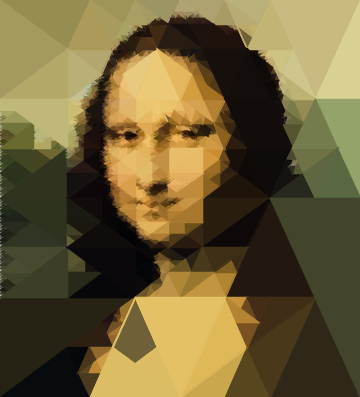Mona Mosaics
By: Jeff Clark Date: Sat, 05 Nov 2011
A couple of years ago I explored reconstructing images based on Delaunay triangulization and Voronoi decomposition. Inspired by the work of Jonathan Puckey and Andy Gilmore I've revisited the idea of rebuilding images using some geometric-based simplification.
The source image for all these example is the Mona Lisa. The first rendering is a simple square grid where the colour of each square is the average colour in that region of the underlying image. By using a smaller grid size one can obviously get more detail than is shown here.
The image beside it is much more interesting. I start by looking at large square regions to see how much the colour varies. If it is fairly consistent then that implies there is less detail in that region and I can draw it as a simple large square. If the colour variation is higher than some threshold I look at the smaller subsquares and repeat the process recursively until some lower size is reached. This gives us a version of the image that has smaller more detailed squares where the image varies a lot and larger blocks of colour elsewhere.
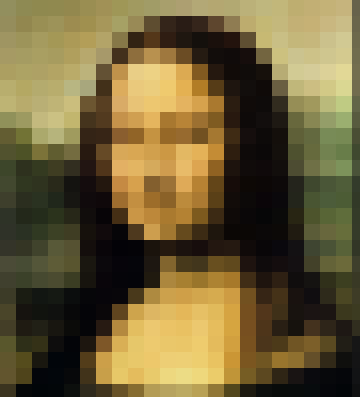
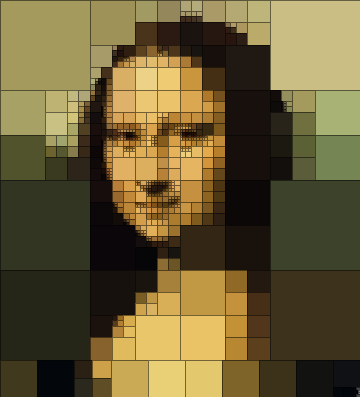
Images 3 and 4 are similar but use triangular regions rather than squares. Another wrinkle which I added to the recursive process is to define a location on the base image that shows the 'center of attention'. I then vary the colour consistency threshold based on distance from that point. This allows for manually defining, to a limited degree, where the regenerated image will be more detailed. For these examples I used a point in the middle of the Mona Lisa's face.
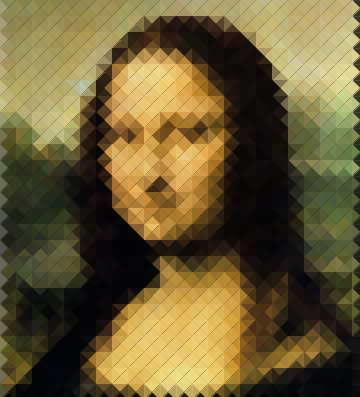
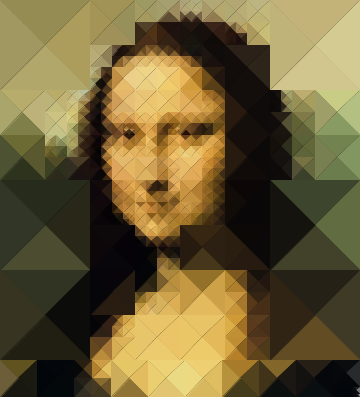
The next 2 versions use circular regions which don't filll all the space so a background colour shows through.
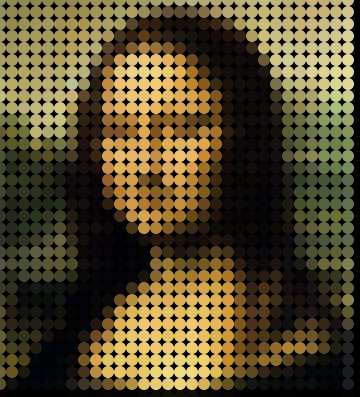
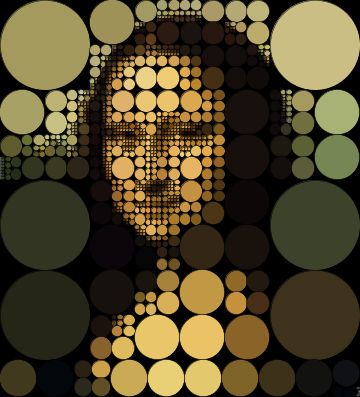
These 2 fill the background of each circle with the average colour of that region and this gives a much more pleasing result.
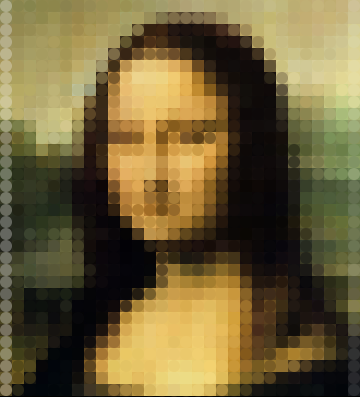
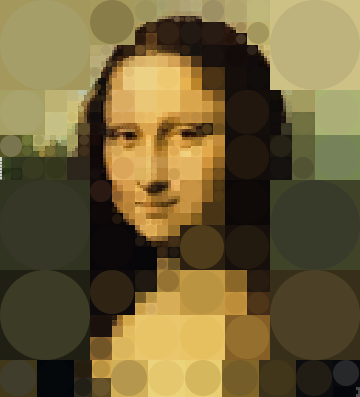
This last image uses a recursive triangle decomposition as well but the sub-triangles are defined in a more varied fashion.
